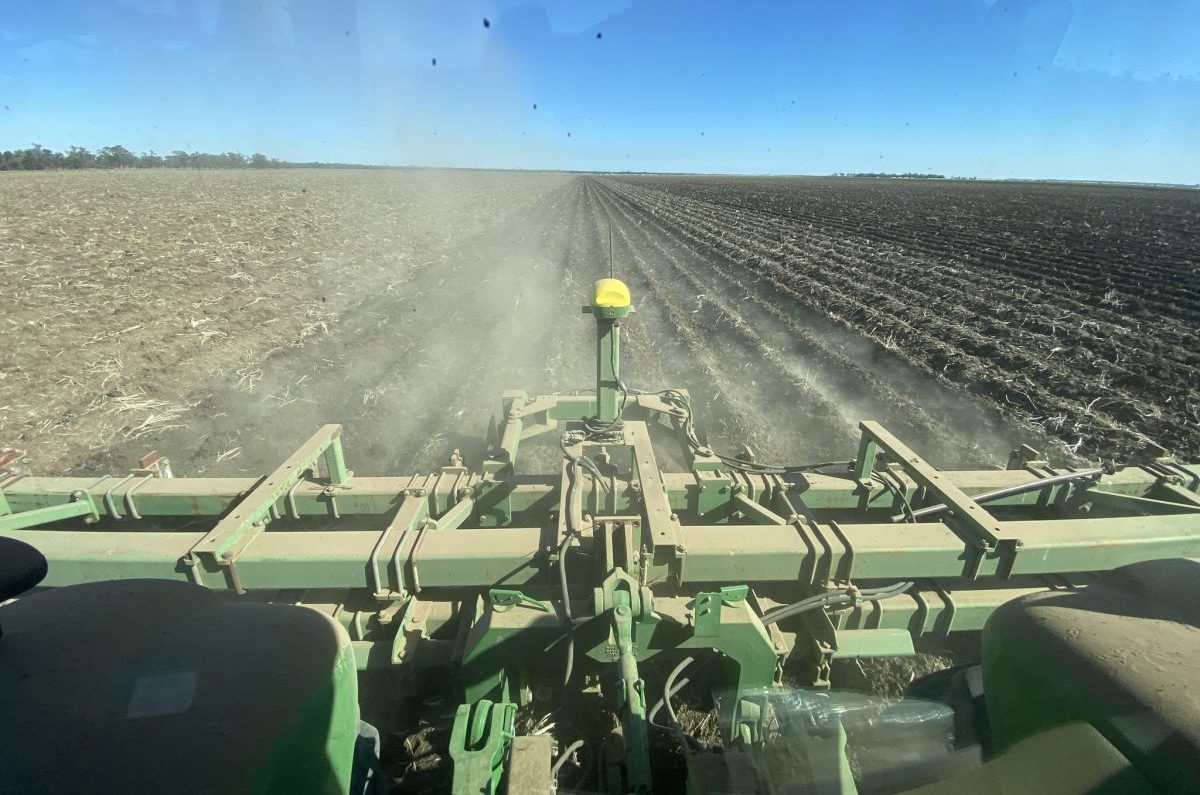
Some growers in districts including Narrabri in northern NSW need more rain to keep planting their winter crop, and are turning to tillage and other activities in the meantime. Photo: Matt Norrie
SOUTHERN markets have firmed this week as dry conditions hamper the end of new-crop planting and start to trouble production outlooks in parts of New South Wales and Victoria.
In the north, sorghum prices have fallen to a level sufficient to spark buying interest from the pig and poultry sectors as Chinese demand backs off.
Dry conditions, and preoccupation with seeding, have reduced grower selling to minimal levels, and seen consumers get serious about booking some new-crop tonnage.
| Today | May 18 | |
| Barley Downs | $435 | $435 |
| SFW wheat Downs | $410 | $410 |
| Sorghum Downs | $365 | $375 |
| Barley Melbourne | $353 | $350 |
| ASW Melbourne | $402 | $400 |
| SFW Melbourne | $398 | $395 |
Table 1: Indicative prices in Australian dollars per tonne.
Northern
Planting of wheat and barley in Queensland is well advanced or completed for many growers, and at the ideal time.
However, dry conditions are limiting progress in many parts of northern NSW, where growers need around 20mm to complete their cereal programs.
“There are a few farmers sitting back waiting for some more rain,” one northern NSW trader said.
“Last week’s rain was very good for those who got it, but west of the Newell Highway and south of Moree, people pretty much missed out.”
Falling feeder cattle prices have seen terms of trade pick up for feedlots, and buying interest from the sector has picked up and is mostly being supplied by trader rather than grower sales.
“Feedlots were a bit long, but they’ve squared up now, even with numbers dropping off lately.
“Their daily usage has dropped off, but it might pick up now with things getting dry.”
Late sorghum crops are being harvested now, but trade sources report bids for the red grain in the cash market have fallen away.
Robinson Grain trader Jock Benham said domestic rather than export business is dominating the cash market at present.
“I think it’s very hard to make anything work to export, with Black Sea wheat or corn going into Asian markets.”
However, previously booked tonnage is still making its way at pace to all eastern Australian ports.
For the first time since October, sorghum is trading at well below wheat and barley.
“The Chinese bid has gone to ground, and it’s trying to work back into domestic rations,” Mr Benham said.
Grower selling of all grains in the north remains minimal.
“Domestic consumers are buying hand to mouth, and there’s not a lot of flow from growers; they’re busy planting their next crop, and it’s gotten a bit dry, so they’re not keen to sell.”
The cottonseed market has risen $5/t in the past week.
“With ginning being late and a slow start, there’s little stock on the floor and hence the front-end demand prevails,” Woodside Commodities managing director Hamish Steele-Park said.
“Export commitments plus domestic equals a backlog of demand, and seed is being picked up as soon as it produced.”
Southern NSW gins are due to start in coming weeks, and most others are operating now.
Cottonseed is currently trading at around $395-$400/t in Moree and the Namoi Valley, while Downs cottonseed is in hot demand and trading at around $460/t.
Dry limits southern sowing
Growers in Vic and parts of South Australia are looking for 10-20mm of rain to get dry-sown cereals up and away, and complete their winter seeding program.
“The market’s divorcing itself from what’s happening overseas and focusing on Mother Nature,” Wilken Grain trader Andrew Kelso said.
Rain early in the planting window has seen canola and pulse crops as well as dual-purpose cereals go into the ground at the ideal time, and get off to a good start.
However, main-season wheat planting is far from over.
“It just won’t rain at the moment, and the wheat market is certainly holding; it’s well bid and with not too many offers.
“With consumers, we are just starting to see a few putting their toe in the water with inquiry for the back half of year; they think prices might start to firm up.”
Growers and traders in southern NSW are looking at the strength in the Downs barley market, and wondering if the $80/t spread is enough to put it on a truck and send it north to the feedlots.
“People in Vic and southern NSW are looking at the Downs market and wondering if it’s at the right number yet for them to sell there instead of keeping it in the south,” one trader said.
The volume of grower sales in the southern domestic market has dropped, with dry conditions fueling grower expectations that the market is unlikely to fall and will very likely rally.
Underpinning this is solid export demand to top up export orders.
“The mood has changed a little bit; the grower has pulled up stumps in the past couple of weeks.”
Grain Central: Get our free news straight to your inbox – Click here



HAVE YOUR SAY